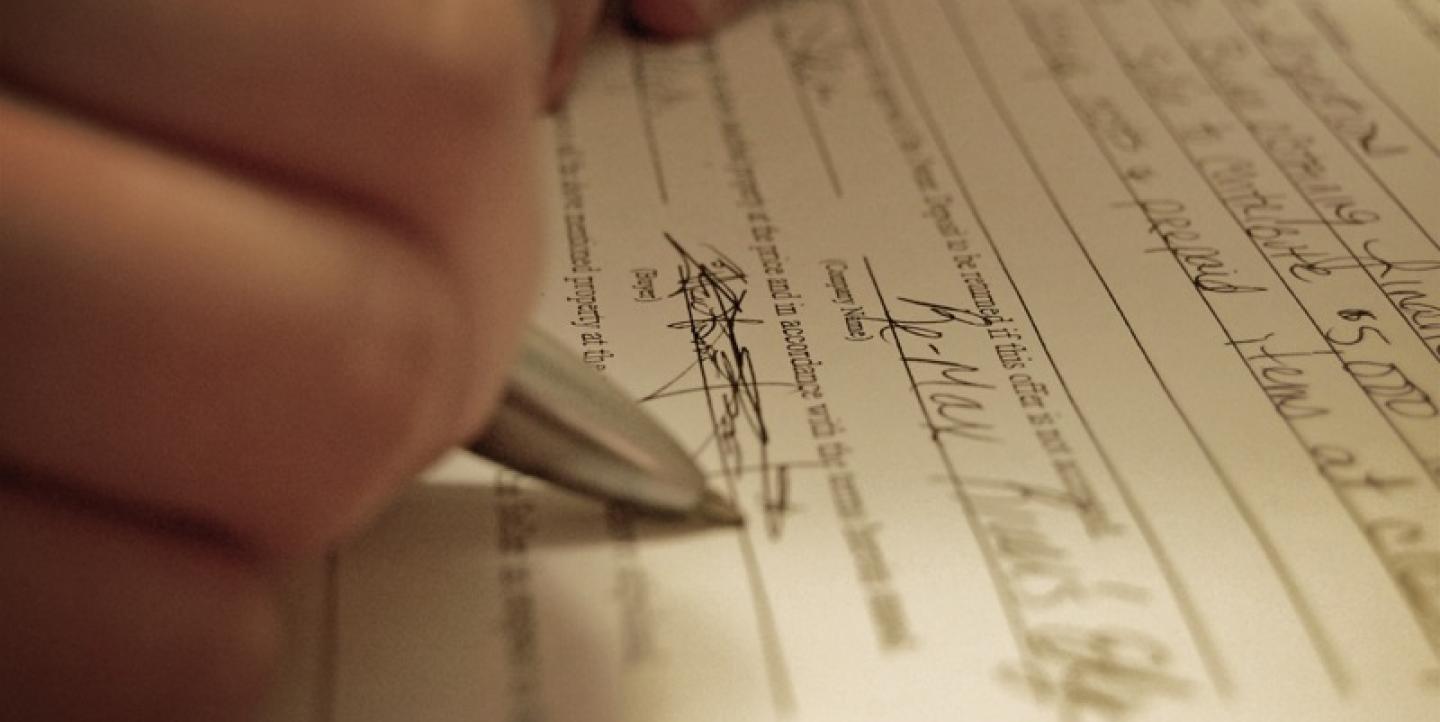The freelance market can be precarious, especially for those who are just starting out. Journalists complain about poor pay, unclear expectations and needy editors – a contract can help you avoid these problems.
Columbia Visuals reporter Joanna Plucinska met with Bill Loundy, the director of talent management at Content.ly, to discuss some of the things that every freelancer should keep in mind when drafting a contract.
So when do you need a contract?
It can feel awkward to draft and send out a contract to an editor, particularly if you’ve never worked together before. But, if you’re nervous about working with a new editor, especially if they have a reputation for being demanding or difficult, it might be a good idea to write one up to avoid conflict once your assignment gets rolling.
Contracts can be useful when you’re trying to clarify what an editor’s demands are for complicated projects. Multimedia projects are becoming more and more popular, and they often have many moving parts, like multiple videos, bits of code, or audio files. Even if you’ve worked with that editor, a contract will be a good way to lay out the editor’s demands for every single step of the project.
Drafting a contract for visual work: the devil is in the details
Make sure you clarify the main deliverable right away. How exactly does your editor want the final product to look? Do they want title cards? Do they want any interactive elements or graphics?
A contract also clarifies your deadlines. That way, you’ll be able to schedule the entire project at the beginning, and you and your editor won’t be anxious about final dates. One option is to break down your work into smaller pieces delivered at intervals, making it easier for both you and your editor to keep track of the project.
Visual journalists also have to cater to the particular preferences of their editors. Keep in mind every editor has different taste in lighting and style of shooting. Ask editors to show you examples of work that they like, or want you to emulate. Even then, you might not produce exactly what they’re looking for. That’s fine – a contract is where you can clarify what to do if this situation arises.
Not sure where to get started? Freelancers Union has a great contract generator.
Payment
This is often the greatest point of contention with freelance work. Make sure you are clear about your expectations and the editor’s expectations from the start, before the project gets rolling.
Your editor should give you an idea of the budget for the project before it begins. It’s important to outline everything, not just the lump sum or the hourly rate. If you’re unsure of how much money to ask for, Scratch Magazine, Pay me Please, Who Pays Photogs and this Video Rate Calculator are all good resources that provide reasonable estimates. You should also state in your contract how much you’ll be paid for re-edits or re-shoots. Your editor won’t be surprised by your invoices if you’re up front with this, and you’ll have something in writing if your editor gives you less money than you expected.
It’s also good to clarify when you would like to get paid. Some places won’t pay you for months unless you include this. Especially if you rely on freelance money to keep you afloat, it’s important to make sure that you get paid either with the first draft, upon completion of the project or a few weeks after completion. It’s also a good idea to establish how you will get paid. A lot of places still send checks in the mail, so it’s important to keep in mind that might take longer than a Paypal or email transfer.
Finally, it’s important not to undersell yourself! If you market your work for a very cheap price, editors will be willing to not only pay you less, but also all other freelancers. You’re hurting not only your own pocketbook, but the earning potential of all of your peers.
When do I need to take my contractor to court or hire a lawyer?
Court and legal fees can cost more than what your original contract is worth. Only the most extreme situation would warrant going to court e.g., your editor hasn’t paid you for months and has shown that he/she has no intention to, or a publication owes you a large amount of money.
In conclusion…
A specific and detailed contract is a great way to ensure all parties are happy with any freelance project. By keeping these points in mind, both you and your editor will know where each person stands on the style and quality of the production, deadlines and the payment amount and method. Drawing up a contract will do both you, and other freelancers in your field, a favor by setting clearer (and hopefully higher!) standards for the work you produce. Happy freelancing!
This post originally appeared on Columbia Visuals and Content.ly and is republished on IJNet with permission.
Columbia Visuals is a resource for visual journalists that explores and celebrates the creative and practical aspects of making visual journalism. It is a project of the Digital Media department at Columbia University's Journalism School.
Content.ly is a media strategy consulting company with resources for freelancers.
Main image CC-licensed by Flickr via Jull.

